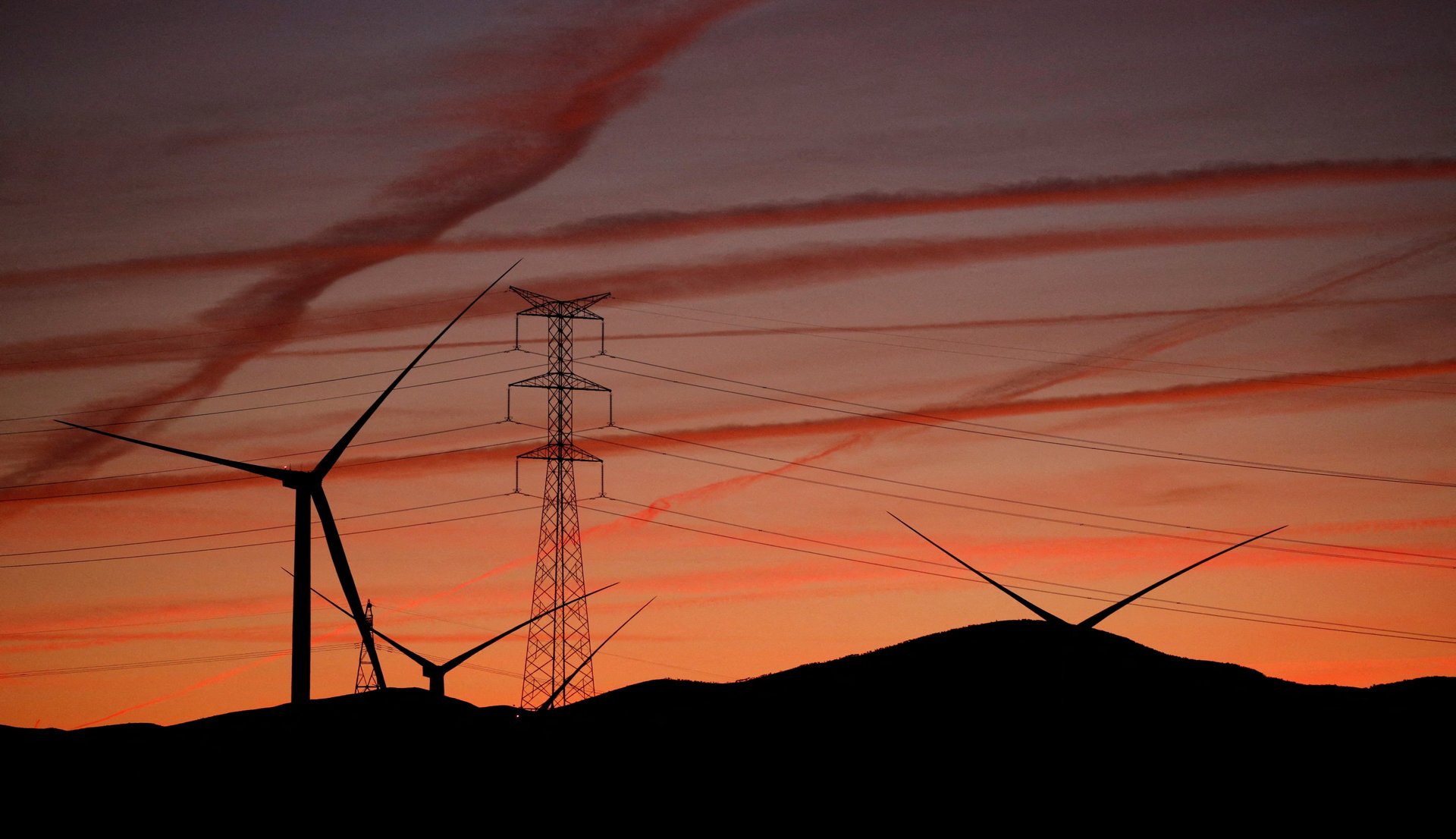To fix its broken power market, Europe has to break it more
Thanks to Putin's pressure on the market, the EU is aiming to divorce electricity prices from natural gas prices.

Europe’s electricity market is in a state of panic. Calming it down might require an unprecedented level of government manipulation.
August was the most expensive month on record for electricity in Europe, according to the intelligence firm Rystad Energy. On Aug. 29, electricity futures in Germany (the European benchmark) jumped above €1,000 ($998) per megawatt-hour, more than ten times the normal rate during the last decade. On Aug. 30, as factories around the bloc suspended operations because of unaffordable power costs, Ursula von der Leyen, the European Union Commission president, said: “The electricity market is no more a functioning market.” And she didn’t hold back from finger-pointing: “There’s one actor—Putin—who’s systematically trying to destroy it.”
Since its invasion of Ukraine in February, Russia has been tightening the taps on Europe’s supply of natural gas. On Aug. 31, Russia completely cut off the flow of gas through Nord Stream 1, the continent’s main delivery pipeline, ostensibly for maintenance, and has halted other gas deliveries over payment disputes with European buyers.
Europe’s electricity market is tied to gas
Normally, if a supply shortage causes the price of gas to rise, other suppliers would step in to fill the gap. That’s happening to some extent; shipments of liquified natural gas from the US, Egypt, and other exporters to Europe are surging. But Europe lacks the LNG import capacity to fully make up for lost Russian pipeline deliveries. And regardless of how high the price soars, new supply chains and alternative energy systems can’t be constructed fast enough to completely solve the problem for at least a couple of years.
This is a problem for electricity users because of how the power market is designed. Europe’s grid solicits bids from power generators—operators of gas, nuclear, or coal-fired power plants, or of wind and solar farms—to sell it the power it expects to need. Generators line up in order of production cost. Those with the cheapest cost of production get to sell first, followed by those with higher costs, until the supply request is filled. Typically, renewables are at the front of the line; with gas prices soaring, gas plants are at the back of the line.
The wholesale electricity price for a given day is pegged to the last, highest-cost generator in line—now usually a gas plant. This market design creates an incentive to drive down production costs, since the lowest-cost generator will have the biggest profit margin. But it exposes power users to commodity market volatility. Normally, that’s hardly noticeable. But when a dictator hell-bent on sowing geopolitical chaos is running the taps, the market can’t fix sky-high electricity prices, giving Putin the power to drag down on Europe’s economy.
Europe may cap the price of gas
EU leaders said this week they’re cooking up a plan to separate gas and electricity prices. No details of that plan have been published yet. But it could involve some form of gas price cap, in which governments pay the difference between the real market price of gas and how it is priced in the power and heating markets. Gas could also be walled off from other power generation sources in the grid bidding process. Governments could also cut checks to low-income households or critical industrial users to offset their high energy costs.
The risk of a price cap is that it is effectively a government fossil fuel subsidy that both removes any incentive to curb consumption and gives gas an unfair leg up on clean energy. But if the alternative is blackouts, cold buildings, and shuttered factories, that might be a risk Europe has to bear.
